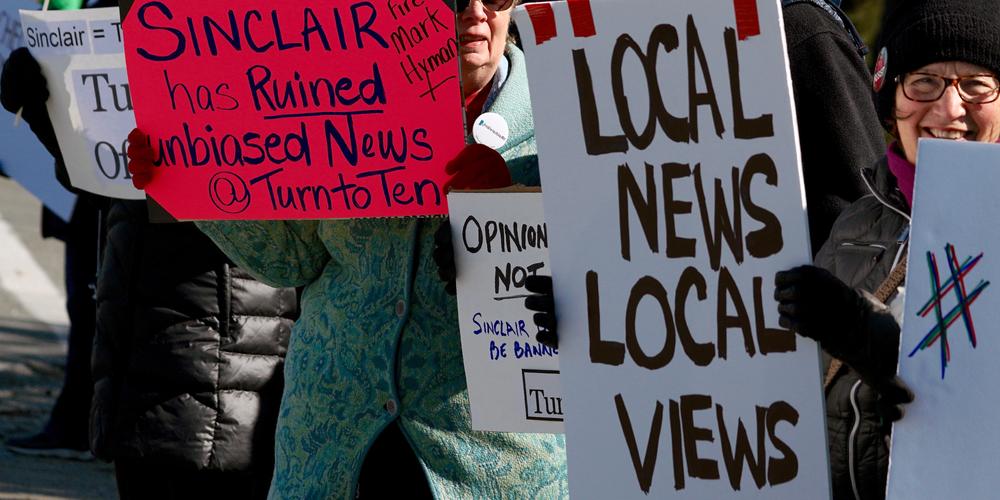Sinclair Broadcast Group catapulted back into the spotlight following the suspension of Jimmy Kimmel over his Charlie Kirk comments. The U.S. telecommunications conglomerate has steadily bought up a huge share of local news stations and is accused of forcing journalists to cite scripts that promote right-wing talking points.
Featured VideoAlong with Nexstar, Sinclair is now the focus of concerns around broadcast monopolies and the fate of free speech in America.
How much of the media does Sinclair own?
According to Sinclair’s own website, the conglomerate owns 185 TV stations across 85 markets in 32 states. The U.S. Securities and Exchange Commission, however, put this number at 294 stations across 89 markets. All in all, Sinclair reaches around 40 percent of American households.
AdvertisementThis one company is second only to Nexstar in its monopolization of TV stations in the U.S. Sinclair’s rival brags of acquiring “more than 200 owned or partner stations in 116 U.S. markets reaching 220 million people.”
Both Nexstar and Sinclair are currently working on deals with the Federal Communications Commission (FCC) to approve mergers and acquisitions that would give each an even greater reach into American households and minds. Not only do they need FCC approval, but they will also need the commission to change the rules on how many TV stations one conglomerate can own.
As of today, the maximum share of this market one company can grab is 39 percent. Sinclair and Nexstar’s pending mergers would grant both of them a larger share than that. Nexstar’s acquisition of Tegna is expected to allow the company to reach 80 percent of households.
AdvertisementWhy is Sinclair’s growth a free speech issue?
The issue with one or two massive corporations owning nearly all the TV stations in a single nation comes down to the views of those who own the companies. There might not be such an issue if these conglomerates were truly devoted to freedom of speech and non-interference in reporting.
However, it somehow never seems to work out this way.
AdvertisementIn 2017, during President Donald Trump’s first term, comedian John Oliver did a segment on Sinclair on Last Week Tonight, exposing the company’s policy of handing their anchors mandatory scripts. He demonstrated the dystopian vibes by playing dozens of clips of journalists rattling off the exact same lines at the same time.
The following year, ThinkProgress obtained and published an official Sinclair script from Seattle-based station KOMO.
The text warned of alleged “one-sided news stories plaguing our country” that seemed to echo Trump’s exact sentiments about “fake news.”
“The sharing of biased and false news has become all too common on social media,” it reads.
Advertisement“Unfortunately, some members of the media use their platforms to push their own personal bias and agenda to control ‘exactly what people think’ … This is extremely dangerous to a democracy.”
Deadspin followed this with an Oliver-style video of their own, posted to what was then Twitter.
The Kimmel debacle reminded Sinclair’s critics of this problem, which has only grown over the years.
Advertisement“Speaking of Sinclair…never forget this Deadspin video from a bunch of local news outlets from 2018, during Trump’s first term,” wrote @offbeatorbit.
Sinclair has so far refused to air Kimmel’s return episode after Disney reinstated him on Wednesday.
Advertisement
 Amid rising tensions, Poland urges citizens to 'immediately' leave Belarus
Amid rising tensions, Poland urges citizens to 'immediately' leave Belarus